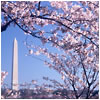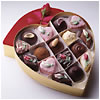
Boys and girls in Hawaii wear kimono and yukata on Girl's Day in 2000.
Photo Courtesy of Honolulu Star Bulletin and starbulletin.com. Photo by Ken Ige.
Girls’ Day and Boys’ Day in Hawai’i
Girl’s Day, and Boys’ Day, are both celebrated in Hawaii and in places in the mainland United States that have large Japanese American communities. These festivals came to the United States with Japanese immigrants who left Japan in the late 1800s. Although days are celebrated differently than they are in Japan, it easy to see their Japanese origins.
Girls usually start setting up their doll collections a couple weeks before Girl’s Day on March 3rd. People in Hawaii believe the doll collection must be taken down on March 3rd if their daughter is to marry. A special three-colored diamond-shaped rice cake, called hishi mochi, is eaten on this day.
Boy’s Day is celebrated in Hawaii on the same day as it is in Japan, May 5th. Families fly colored carp streamers on bamboo poles from their roofs. There is one carp for each boy in the family. Today some families fly a carp for every child in the family, boys and girls. And some people in Hawaii, regardless of ethnic group, fly carp on this day.Girl’s Day, and Boys’ Day, are both celebrated in Hawaii and in places in the mainland United States that have large Japanese American communities. These festivals came to the United States with Japanese immigrants who left Japan in the late 1800s. Although days are celebrated differently than they are in Japan, it easy to see their Japanese origins.
Girls usually start setting up their doll collections a couple weeks before Girl’s Day on March 3rd. People in Hawaii believe the doll collection must be taken down on March 3rd if their daughter is to marry. A special three-colored diamond-shaped rice cake, called hishi mochi, is eaten on this day.
Boy’s Day is celebrated in Hawaii on the same day as it is in Japan, May 5th. Families fly colored carp streamers on bamboo poles from their roofs. There is one carp for each boy in the family. Today some families fly a carp for every child in the family, boys and girls. And some people in Hawaii, regardless of ethnic group, fly carp on this day. However, other aspects of the festival such as special foods, and doll collections featuring warriors and heroes are likely to be found only in Japanese American homes.Girl’s Day, and Boys’ Day, are both celebrated in Hawaii and in places in the mainland United States that have large Japanese American communities. These festivals came to the United States with Japanese immigrants who left Japan in the late 1800s. Although days are celebrated differently than they are in Japan, it easy to see their Japanese origins.
Girls usually start setting up their doll collections a couple weeks before Girl’s Day on March 3rd. People in Hawaii believe the doll collection must be taken down on March 3rd if their daughter is to marry. A special three-colored diamond-shaped rice cake, called hishi mochi, is eaten on this day.
Boy’s Day is celebrated in Hawaii on the same day as it is in Japan, May 5th. Families fly colored carp streamers on bamboo poles from their roofs. There is one carp for each boy in the family. Today some families fly a carp for every child in the family, boys and girls. And some people in Hawaii, regardless of ethnic group, fly carp on this day. However, other aspects of the festival such as special foods, and doll collections featuring warriors and heroes are likely to be found only in Japanese American homes.
|

